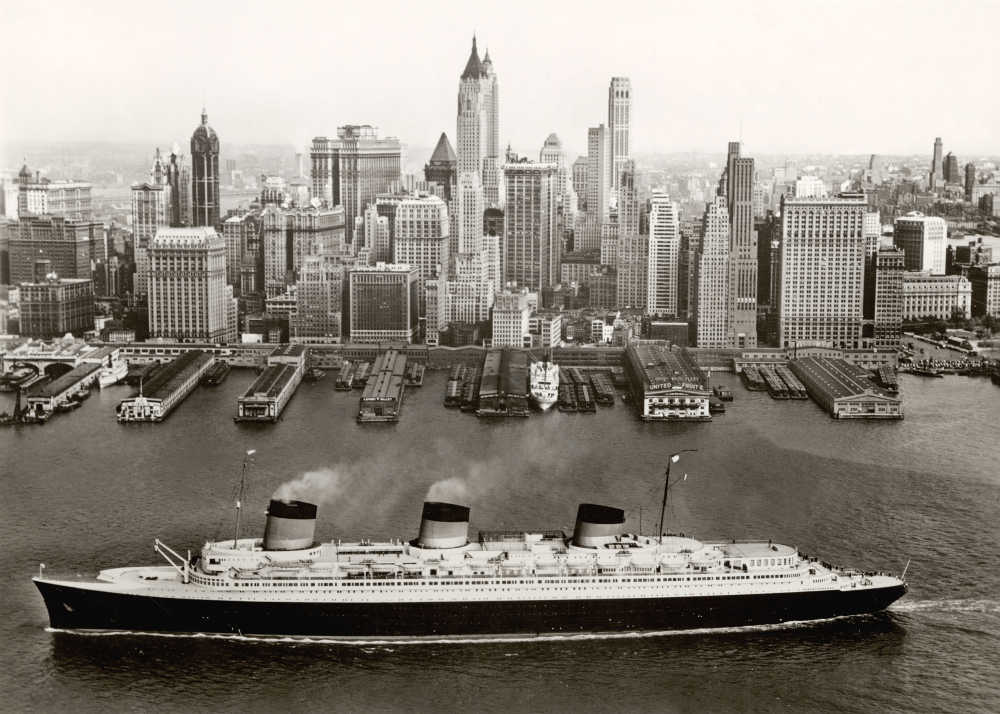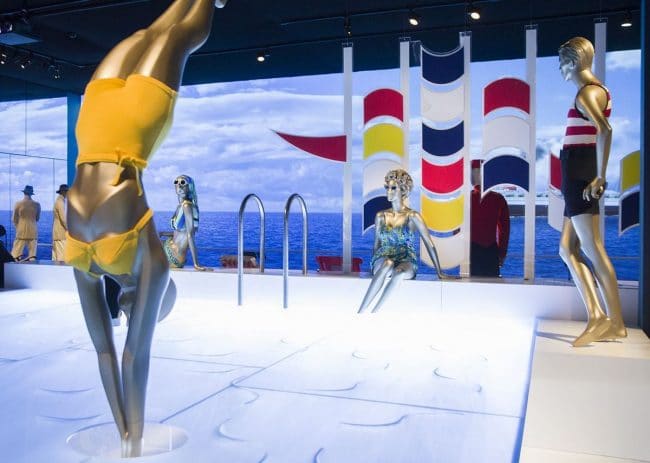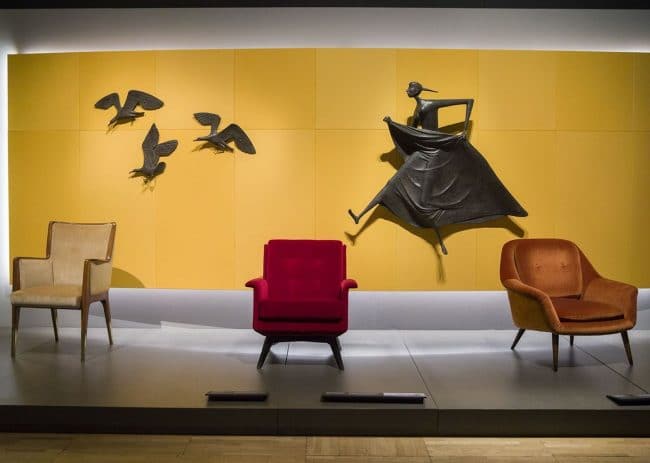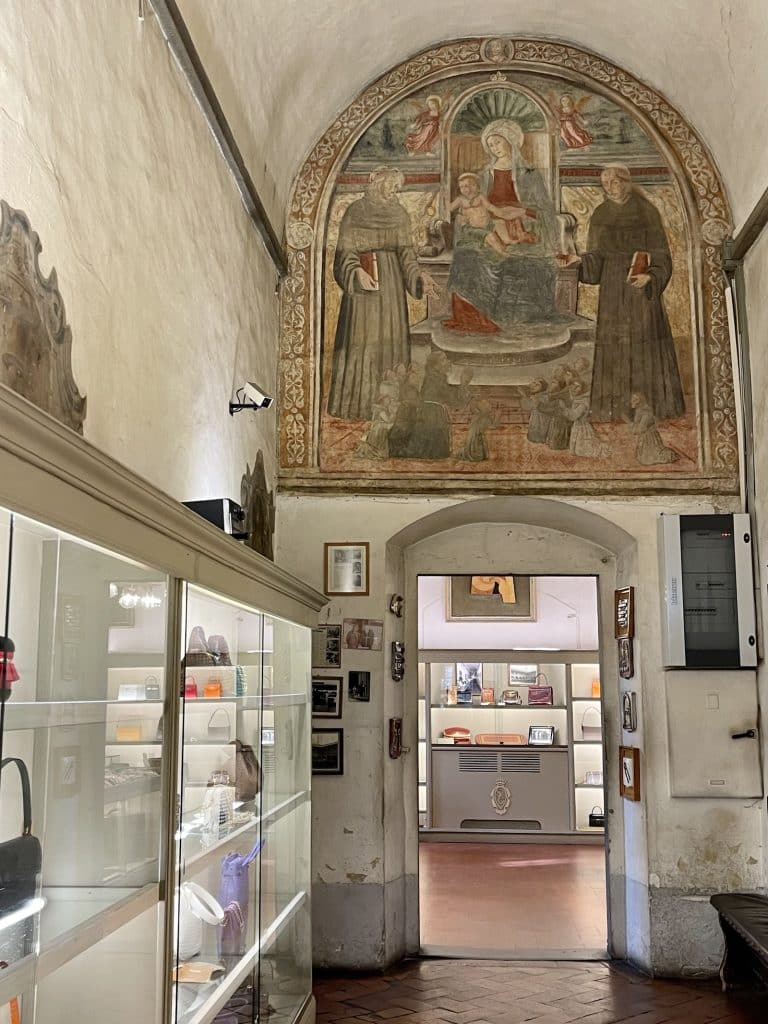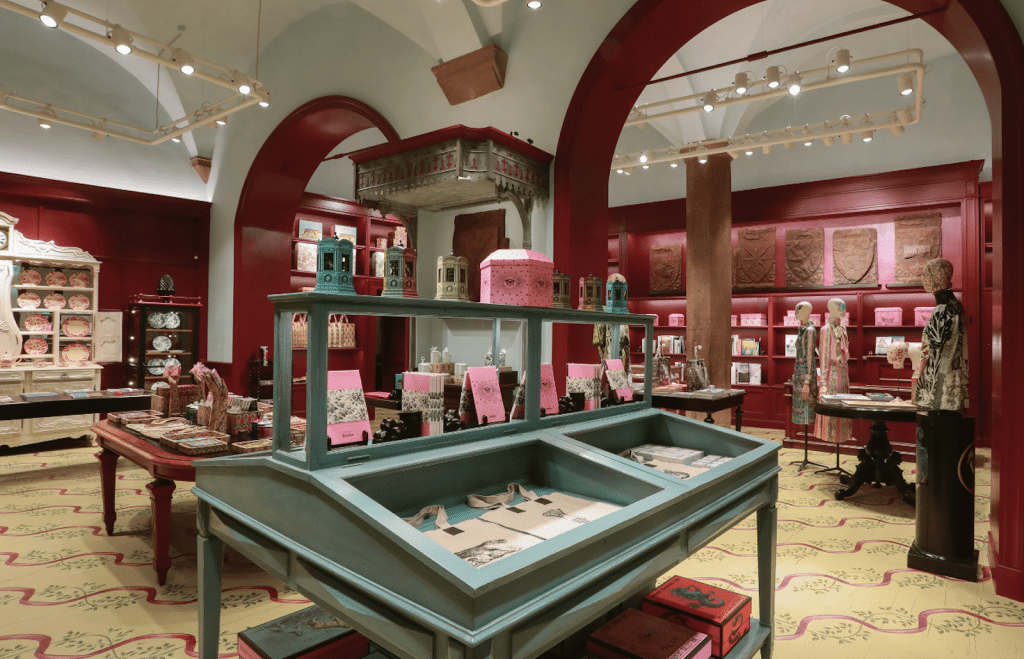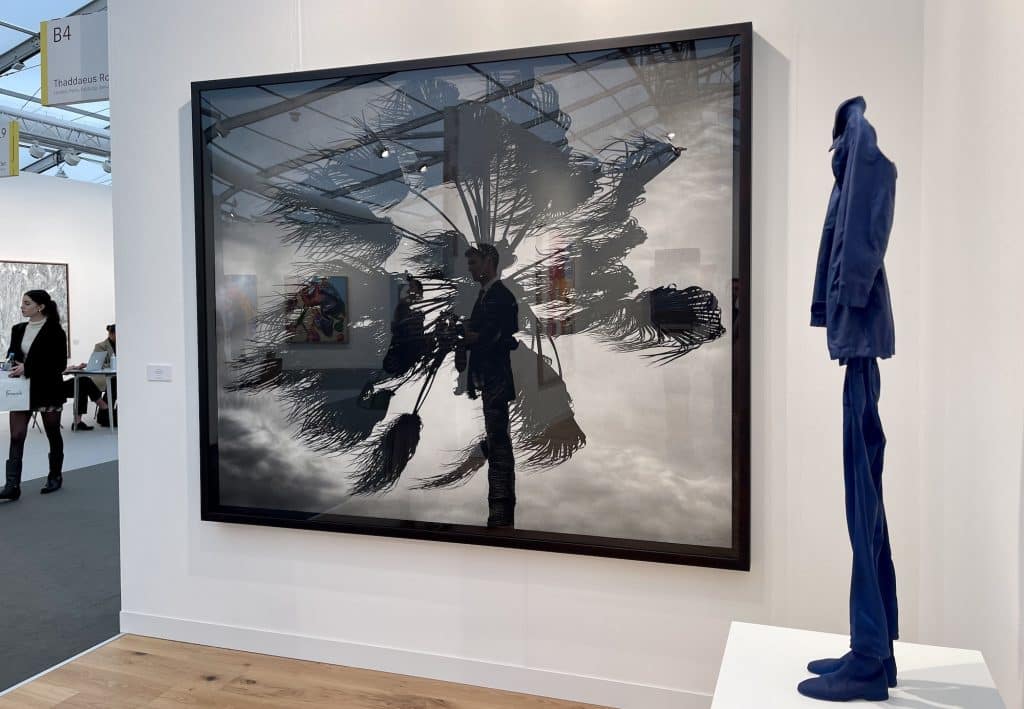The V&A have excelled in their reimagining of the golden age of ocean travel with Ocean Liners: Speed and Style. Three years in the making, sponsored by Viking Cruises, and co-organised by the V&A with the Peabody Essex Museum in Salem, Massachusetts, it is the first ever exhibition to explore the design and cultural impact of the ocean liner on an international scale. This sumptuous exhibition explores all aspects of ship design from ground-breaking engineering, architecture and interiors to the fashion and lifestyle aboard.
Ocean Liners: Speed and Style showcases over 250 objects, including paintings, sculpture, and ship models, alongside objects from shipyards, wall panels, furniture, fashion, textiles, photographs, posters and film, the display includes objects never-before-seen in Europe, and even more poignantly, reunites objects not seen together since on-board these spectacular vessels, which revolutionised ocean travel from the mid-19th century to the late 20th century.
Beginning with Brunel’s steamship, the Great Eastern of 1859, Ocean Liners: Speed and Style traces the design stories behind some of the world’s most luxurious liners, from the Beaux-Arts interiors of Kronprinz Wilhelm, Titanic and its sister ship, Olympic, to the floating Art Deco palaces of Queen Mary and Normandie, and the streamlined Modernism of SS United States and QE2. It also sheds light on the famous passengers and the great couturiers who looked to ocean travel to promote their designs.
Highlights of the exhibition include a precious Cartier tiara recovered from the sinking Lusitania in 1915. Others include a stunning interior panel from the Smoking Room of the French liner, Normandie, created by leading Art Deco lacquer artist Jean Dunand, and Stanley Spencer’s painting ‘The Riveters’ from the 1941 series Shipbuilding on the Clyde.
The Duke of Windsor’s 1940s Goyard luggage also features, on display in Europe for the first time since leaving the Windsor Estate. As the largest machines of their age, ocean liners became powerful symbols of progress and 20th century modernity. The exhibition will also feature ground-breaking works by Modernist artists, designers and architects inspired by liners, including Le Corbusier, Albert Gleizes, Charles Demuth and Eileen Gray.
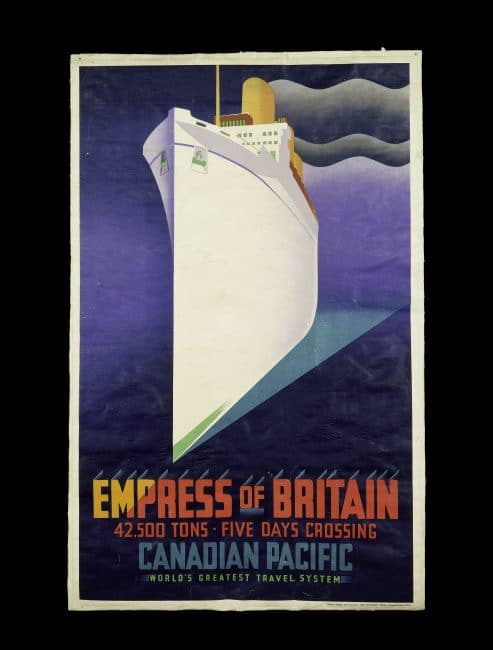
This seminal exhibition also reveals the largely forgotten history of leading artists and designers who contributed to their design, such as William De Morgan, Richard Riemerschmid, Jean Dunand, Edward Bawden and Edward Ardizzone. It also highlights the political shifts and the international rivalry that developed over 100 years, as liners became floating showcases of national ingenuity.
With a homage to the fashion of the day, there is a stunning Christian Dior suit worn by Marlene Dietrich as she arrived in New York aboard the Queen Mary in 1950, and a striking Lucien Lelong couture gown worn for the maiden voyage of Normandie in 1935. The Ocean Liners: Speed and Style also showcases one of the most important flapper dresses in the Victoria & Albert Museum’s collection – Jeanne Lanvin’s ‘Salambo’ dress – a version of which was displayed at the Exposition Internationale des Arts Décoratifs et Industriels Modernes in Paris in 1925. The dress belonged to Emilie Grigsby, a renowned wealthy American beauty, who regularly travelled between the UK and New York aboard the Aquitania, Olympic and Lusitania throughout the 1910s and 1920s.
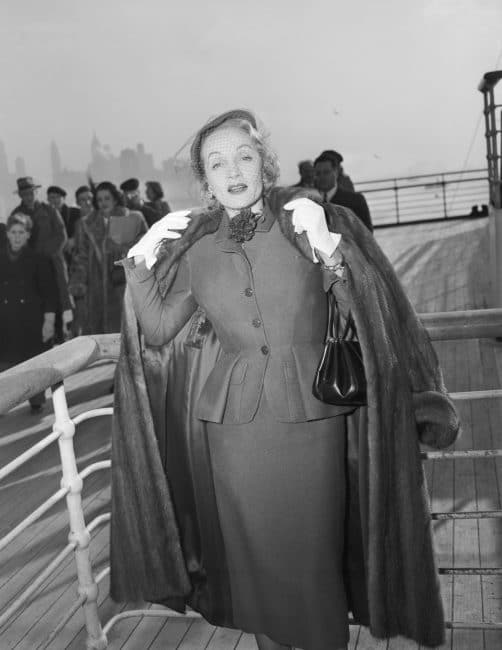
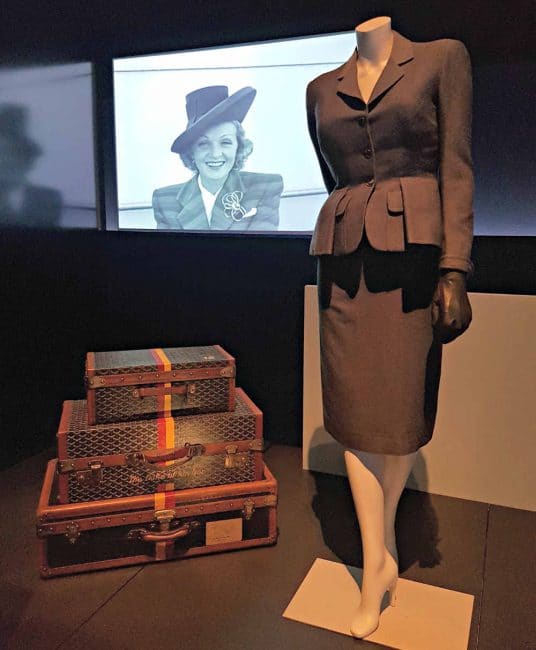
Below, a deckchair from the Titanic, rescued the bottom of the Atlantic ocean.
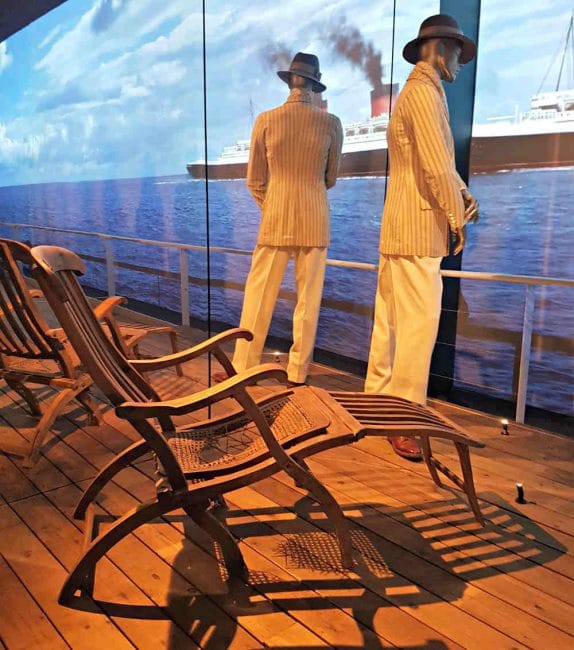
The ocean liner has been appropriated into pop-culture, literature and films, including Ronald Neame’s dystopian The Poseidon Adventure (1972) and James Cameron’s Titanic (1997), which remains one of the most successful films ever made. In the last room, an overdoor from the first-class lounge of the Titanic is displayed, bathed in a ghostly light. The panel fragment is returning to the UK for the first time since the ship’s doomed maiden voyage in 1912. It’s a fitting, moving closure to Ocean Liners: Speed and Style, and sums up the depth of nostalgia for the great ‘floating palaces’ of the past which can still be felt today.
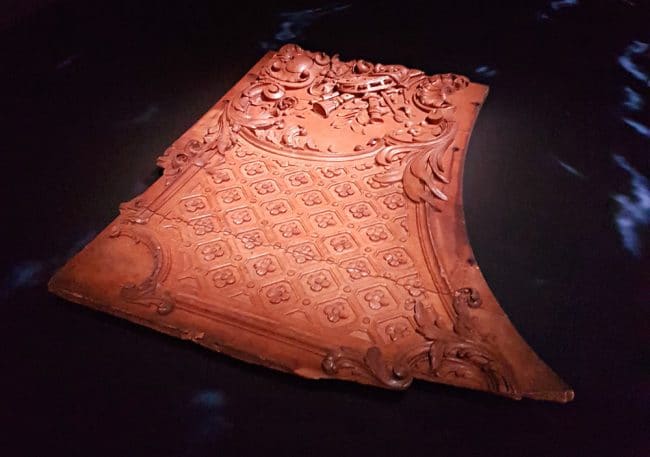
Ocean Liners: Speed & Style at the Victoria & Albert Museum runs to 10 June 2018.
For more information visit: Victoria & Albert Museum




